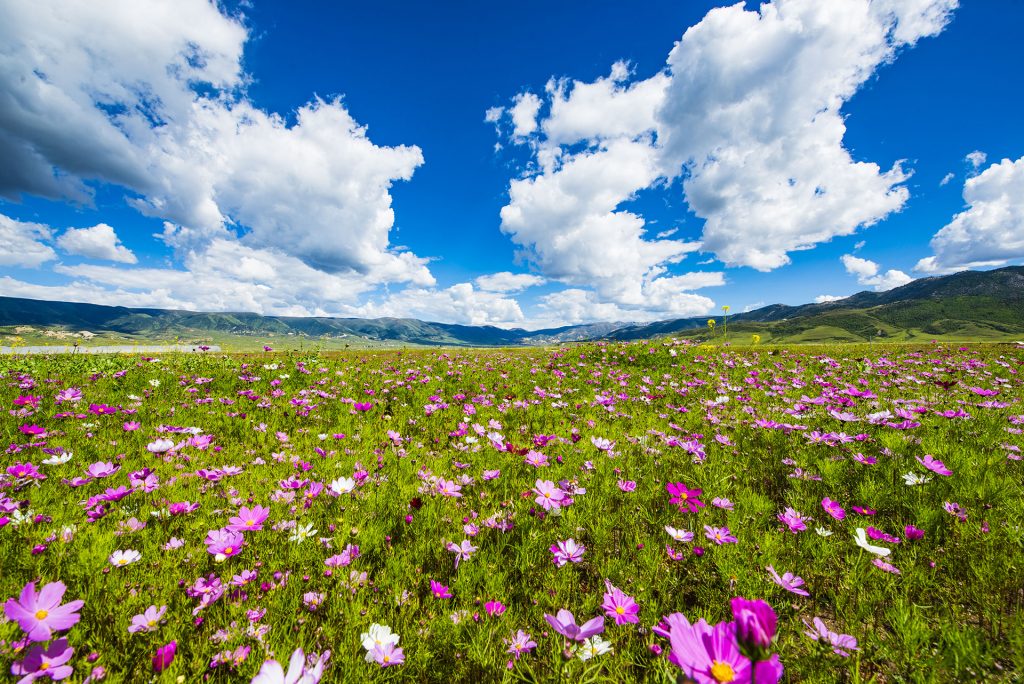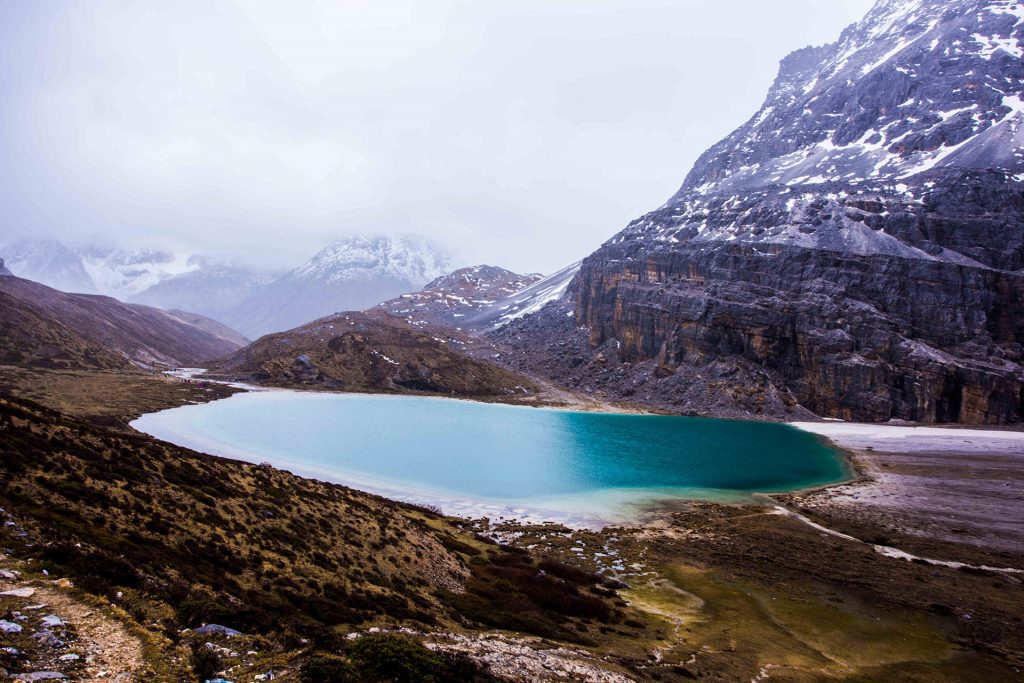From the sentence that “Daocheng is the last virgin ground on the blue Earth“, we can find out the charms of this place. Firstly, Daocheng is extremely beautiful and clean. Second, Daocheng is a site known by others just in a short time. And Yading area is one of the highlights in this district.
Daocheng
Located in the south of Ganzi Tibetan Autonomous Prefecture in southwest China’s Sichuan Province, Daocheng is widely regarded as “the last pure land in the blue planet.” At an average elevation of 3800 meters, Daocheng is renowned for its magnificent mountain and wild lake scenery. Forests, grasslands, and brooks can all be found in the grand valley, fringed by splendid mountain peaks capped with snow. In this holy land, you can still find local Tibetans living in their traditional lifestyle.
What to see in Daocheng
The scenes are various and bewitching. In the north of Daocheng County lies the plateau area with broad valleys. Mt. Haizi (Lake), parallel to Daocheng River and with an altitude of 3600 – 5000m, is the largest remnants of glaciations on the Qinghai-Tibet Plateau, traditionally called “the Old Ice Cap of Daocheng”.
The middle of Daocheng county is of mountain plateau, including the Bowa Mountain and the Chitu River. On both banks of the river are broad pastures and stretches of forest. Mt. Bowa, grand and scenic, is sharply distinct during the four seasons: in spring and summer, azaleas bloom to vie each other for beauty, in autumn, leaves as red as flame cover the trees, while in winter, snow clothes all and gleams white. In the south of the county are mountains and valleys.
Mt. Echu, parallel to Dongyi River and with an altitude of 5140m, is as charming and attractive as a pretty fairy sitting up – right on the clouds, although it is lofty and majestic. What is most fascinating about Mt. Echu is its autumnal tints: the bright red, lucid yellow and delicate green make the mountain colorful. “Both heavy and delight makeup are compatible with it”,
The Dongyi River, rushing down from Mt. Echu like a steed, has two banks covered with towering old trees and jagged rocks. The rumbling waves and series of waterfalls wonderfully correspond to the mountain.
Adjacent to Mt. Echu is Daocheng Sacred Peaks – the Heavenly Charms in the Snow World which are well-known among the Tibetan people. The Daocheng Sacred Peaks covered with snow all the year round are grand and majestic. On the mountainside are colorful lakes which are gorgeous and changeful; At the foot of the mountain, on the pastures are rare fowls and valuable animals that co-exist harmoniously with the people. The peaks are regarded as sacred peaks by the Tibetan people; and visited by continues stream of devotees.
What to see in Yading
Yading Scenic Area is the central attraction of Daocheng. It is the most well-preserved natural ecosystem in China, reputed as the last virgin ground in the blue Earth in the world.
【Chonggu Temple】
Chonggu Temple is located on the foot of Xiannairi Snow Peak. The badly damaged temple has a legend that there was a monk who planned to distribute himself to the holy mountain for spreading Buddhism. When he began to build a temple, he caused the gods angry because he destroyed a scared land. And then, diseases were spread among people. The monk tried to help people get rid of the disaster by reading Buddhism scripts every day. Finally, the gods were touched by his behavior and honesty, so they decided to remove the disaster on the locals. But the monk caught a serious illness and past away. This temple is built to memory his mercy.
【Sanhuzhu Snow Mountain】
This snow mountain consists of three snow peaks. One is called Xiannairi Peak which is looked like a giant Buddha figure; one is called Yangmaiyong Peak which is looked like a beautiful lady; and the last one is called Xialang which is looked like a young man.These three peaks are called Sanhuzhu Snow Mountain, ranking the eleventh in the world’s top 24 Buddhism holy lands.
【Yading Village】
Yading Village is adjacent to the national natural preserve district – Yading, thus its name. It is reputed as the last Shangri-La in the world. In a 3,900 meters height above sea level, there are about 28 families dwelling here.





